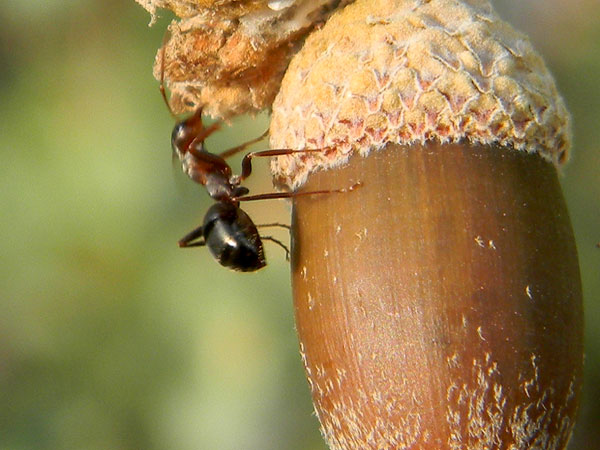Wood Ant
Formica

Observed on acorns of Scrub Oak near Seven Springs, Maricopa Co., Arizona. August 2011.
Sponsored Links:
Formica ants are among the most important components of temperate woodlands throughout the Northern Hemisphere. Similarly they are ecological keystone species in riparian, semi-arid woodlands and montane forests in Arizona. The duties they perform are several. Firstly they are predators of crawling insects such as caterpillars and their eggs. Sugars are vital in the ants' diets and plants often oblige by producing sugary substances that keep the ants patrolling and hunting down the plant-feeding insects.
Secondly, wood ants defend sources of sugar on trees and shrubs. Sometimes this sugar comes from plant feeding insects, especially sap-feeding bugs. Colonies of bugs are thus defended and can become very numerous with the help of the ants.
Formica ants are of many species and separating them usually requires a microscope and considerable expertise. Most are about 4 to 6 mm long, rather large for ants, have long slender legs, and move quickly and with agility. When disturbed they expell a mist of formic acid from their posterior; the odor is distinct and powerfully acrid. It is a potent deterent to herbivores attempting to chew the leaves and to insectivores targeting the ants or their stocks of bugs.